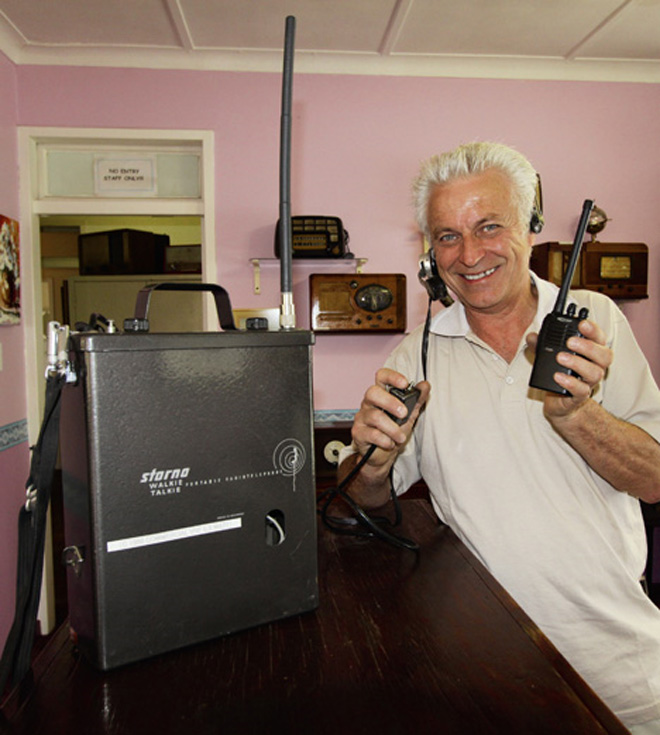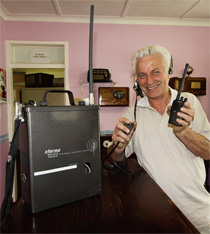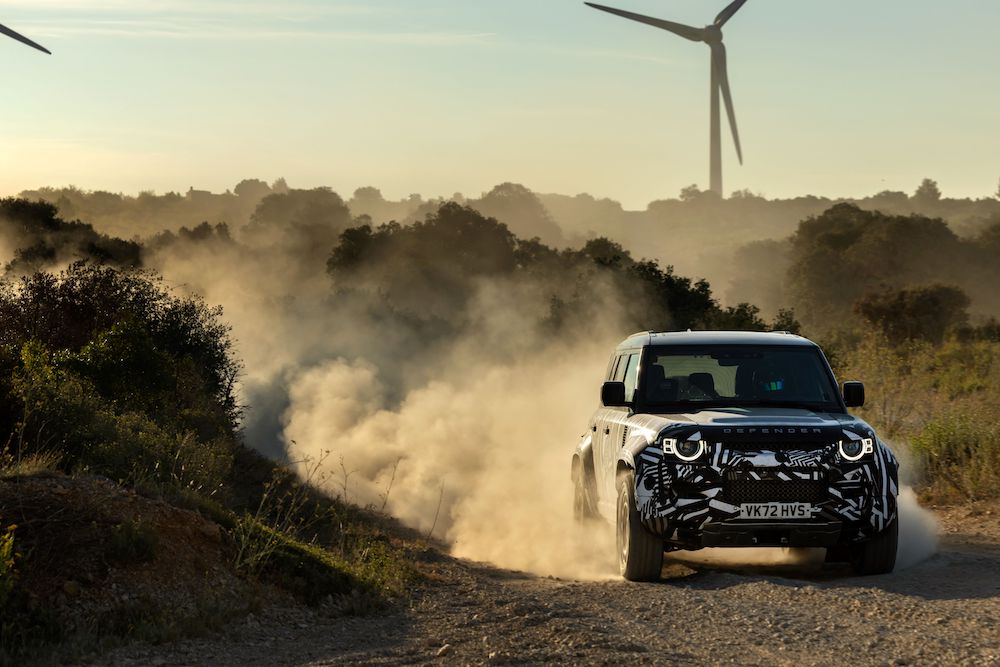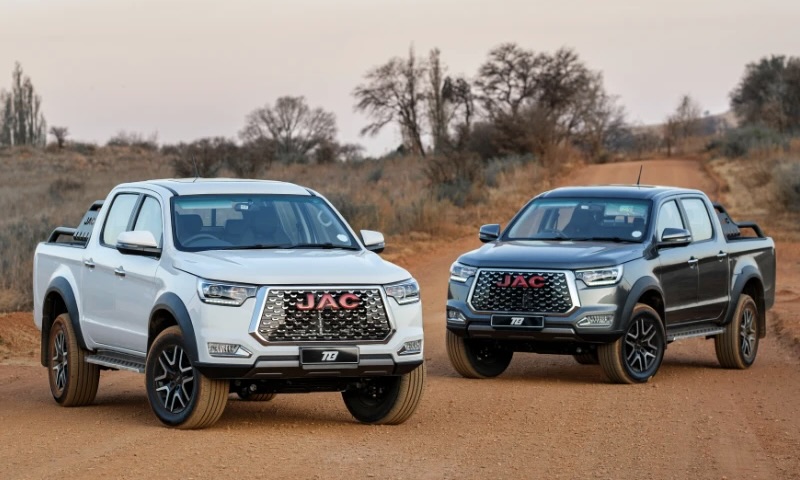Two-way radios can be fun to use, can save lives in an emergency, and aren’t even that expensive. So why do so many 4×4 drivers consider them unnecessary? We found out some more information to try and show their worth
Text: Stephen Smith Photographs: Jannie Herbst
It seems to us that two-way radios are way down on the list of priorities for most 4×4 drivers, and we just don’t understand why. We use them whenever we can, and if there is more than one vehicle on any trip we go on (and there really should be) then we make sure that they are amongst the first things we pack.
So we thought we would try to encourage the practice, but showing you why two-way radios are helpful (and fun), and what you have to do to have and use one, legally. And maybe we’ll convince you that leaving home without a set just doesn’t make sense.
The benefits of two-way radios are fairly obvious: they allow you to communicate with other people, and they don’t need cellphone coverage to work (and you’re not charged every ti me you use them!). Some people use them for emergencies, but they can also be useful in a convoy, pointing out birds, plants and animals along the way, giving directions, warnings of road hazards and more.
But what is involved in buying a two-way radio, using it legally, and using it efficiently? We spoke to Kim Carmichael of the Off -Road Radio Association (ORRA) to fi nd out more.
To use a two-way radio legally, one needs to have a licence, registered through the Independent Communications Authority of South Africa (ICASA). This can be obtained directly from ICASA, via the Post Office, but this entails a fair bit of hassle, and you need to reapply every year.
An easier option is to apply for your licence through ORRA. ORRA holds some licences from ICASA, and provides these licences to members of affiliated AAWDC clubs on behalf of ICASA. Through ORRA the application for licences is made much easier. Each year ORRA sends you an invoice via email or post, and you deposit the fee into their account. All of the accumulated licence fees are then paid to ICASA. ICASA recognises ORRA as the representative body for 4×4 radio communications and as such has outsourced the licensing of these radios to ORRA.
Up until 2006 the only frequencies available to the 4×4 fraternity were in the 29MHz band. In 2006 ORRA, in negotiations with ICASA, managed to obtain a nationwide mobile frequency in the VHF FM band, and now provides two VHF frequencies. By obtaining your radio licence through ORRA, certain start-up costs are avoided, although ORRA does charge a small administration fee.
29 MHz radios have traditionally been the most common option, used by most 4×4 clubs, tour leaders and private travellers, perfect for inter-convoy communication. These low-powered radios can usually achieve ranges of between 5km and 15km, although this depends on the terrain and the radio in question (and how it and the antenna has been installed). These radios are also used by farmers in remote areas, and by ski-boats off the coast, and because they are so widely used, it is necessary to use as good an operating procedure as possible: someone out there could be listening to your transmissions (see box).
While the 29MHz band is still popular, it is restricted to just 5 watt s of power, while the newer VHF band is licensed up to 30 watt s. This means a much increased range, of up to 40km.
We also spoke to Domenico Toldo of Topas Electronics, who specialises in the supply and installation of two-way radios. “The sales of 29MHz radios have dropped off significantly in recent years,” he says. “These days I sell far more VHF radios, although I do keep some 29MHz radios in stock for the guys who still want them. Some guys belong to groups that have been using 29MHz systems for 10 or 15 years, so they’re not going to change. And if everyone you want to communicate with is using a 29MHz radio, then a VHF unit is useless!”
But what are the advantages of VHF radio systems? “VHF radios are far more pleasant to use. Because of the increased power they have much greater ranges. They also have better and clearer audio quality, with very little distortion. The antennae of VHF units are generally also much more efficient, so you don’t need a two-metre-long one for a decent range.”
And disadvantages? “There is no real disadvantage, other than the fact that you can only talk to other VHF radios, but that’s the same problem with the 29MHz system.”
Which are the most popular models? “This really depends on the budget of the buyer, but I sell a lot of Kirisun units, which are priced at about R2220. Another popular brand is Kenwood, which is slightly more expensive, being priced at about R2420. A proudly South African option is the locally made QD MR969 (R2150), and I’ve sold hundreds of these. This radio also has a relay that protects the unit, which is a nice feature. Some guys have more money to spend, and they sometimes go for radios like the Icom or Motorola units, which range from R3400 up to over R5000 for a unit.”
And what is the difference between these radios? “To be honest, there isn’t much of a diff erence. They all have to comply with the same parameters set down by ICASA, so they all do the same job. One might have a clearer speaker, but that’s about it. Basically, a unit like the Motorola is the Mercedes of radios, and does the job with a bit more style.”
What about more powerful radios? “There are more powerful radios available, but they are illegal to use. And they’re also pointless, to be honest. Sure, you might have a 75 watt Icom that can transmit for miles, but if the only people who are there to hear you are at the end of your range, and only have 30 watt units, then you won’t be able to hear them!”
And what is the story with servicing radios, and the lifespan of units? “A radio is like a cellphone – it either is working, or it isn’t! So as long as you look aft er it, and don’t get it wet or abuse it, it’ll carry on working for 15 or 20 years. When something does go wrong, it’s usually with the microphone, because that is the bit that hangs down, and moves around. But with the major brands there are spares available countrywide.
Any tips for our radio users out there? “When you buy a radio, install it correctly, or get it installed correctly. It needs to be connected directly to the battery to keep a regular, strong current.
“Something that kills radios is jump starting. If your battery is flat and needs jump-starting, or if you are jump-starting another car, disconnect your radio from the battery, or remove the fuse. Even when you switch your radio off at the power switch, it is really still on.
“Another tip is to have your radio antenna as high as possible on your car. This gives you the best range, and prevents the body panels of your vehicle either absorbing or blocking the signal.“
Another thing to keep in mind is that an ICASA licence is only valid in South Africa, as there is no SADEC agreement on radio licensing. So should you go on a cross-border journey, remember to license your radio for each country you’re travelling to. An unlicensed radio can lead to heft y fines, or the confiscation of your radio, or even of your vehicle.
We asked Domenico what his experience of this was. “Yes, you aren’t allowed to operate a radio without a licence in any country, and licences are only valid for the country they are issued in. But it’s not easy to get a licence in many countries, and so people generally just turn a blind eye to this law. It’s not right, but that’s how it happens.”
So there you have it. Radios aren’t expensive to buy or operate, and it isn’t as much hassle getting licensed as you might have thought. When you consider how much enjoyment and peace of mind they can add to a holiday, it really doesn’t make sense to ignore them for any longer. So get licensed, buy a radio, and start chatting away.
Roger that!
More information:
The fees for a radio licence done through ORRA are as follows:
Application fee (once off): R10
29Mhz licence per radio: R35
VHF licence (x2 frequencies) per radio: R100
ORRA Annual Subscription per applicant: R20
Contact information:
Kim Carmichael of
ORRA: 0861 393-272; [email protected]; www.orra.co.za
Domenico Toldo of Topas Electronics: 011 454-6154; [email protected]; www.topasradio.com.
BOX: Good Operating Procedure
Rule number one: listen before you transmit
Always listen to see if the frequency is clear before you transmit. If two stations transmit at the same time, all the receiving station will hear is garbled nonsense.
Rule number two: legally you are obliged to use call signs.
For a small number of radios, there is no reason why your names cannot be used as your call signs. However, when you have a large group it is best to allocate call signs, or use established ones. Whatever call sign you use it is legally necessary for the leader of the group to identify your group, by transmitting something like “This is a group of 4X4 members on a safari trip to Botswana. We are licensed to use this frequency both in South Africa and Botswana.”
Procedure: Always call the station you want to talk to, and get his reply, before you start sending your message, i.e.: Alpha 1: “Alpha 4, come in for Alpha 1″. Alpha 4 replies: “Alpha 4 standing by” OR “Alpha 1, go ahead”. Alpha 1 now sends his message.
Rule number 3: No one else can transmit while you are holding your push to talk button down.
Rule number 4: Always keep a listening watch.
Nothing can be more frustrating to a transmitting station who knows you should be there but can’t get an answer from you.
Rule number 5: Don’t speak directly into the mike, but across it. Don’t shout, but talk at a normal level, preferably at a slightly slower pace than normal. A good operator will know the International Phonetic Alphabet:
A-Alpha, B-Bravo, C-Charlie, D-Delta, E-Echo, F-Foxtrot, G-Golf, H-Hotel, I-India, J-Juliet, K-Kilo, L-Lima, M-Mike, N-November, 0-Oscar, P-Papa, Q-Quebec, R-Romeo, S-Sierra, T-Tango, U-Uniform, V-Victor, W-Whiskey, X-X-Ray, Z-Zulu.
Also:
Never go off the air without ensuring that the other stations are aware of this. Never use foul language, argue or be discourteous on the air. Correct procedures will enhance the efficiency of your communications, and improve the benefits of your radio. It will enhance the image of not only your group, but your club and even the image of the world of 4×4.









